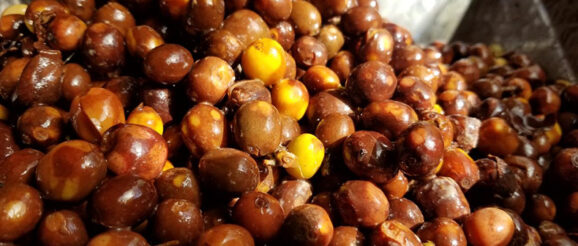Harnessing the innovation of carbonic maceration in coffee | Tea & Coffee Trade Journal

Carbonic maceration is undoubtedly having a moment within the specialty coffee industry. Borrowed from the wine world, carbonic maceration is a fermentation process that can have a significant impact on flavour development.
It was first introduced onto the coffee world stage in 2015 when Sasa Sestic won that year’s World Barista Championships with coffee that had undergone this fermentation process.
Throughout the following five years, more and more producers have started experimenting with this processing technique to produce unique and complex flavours, as well as add value to their crops. However, while this can provide significant benefits to producers, plenty of barriers stand in the way of mass-adoption. And as an industry, there is more we could be doing to support producers who innovate.
The Benefits of Carbonic Maceration
What is carbonic maceration and what are the benefits this is providing to producers?
All washed coffee beans undergo some form of fermentation. However, until recently, this step in the production process was primarily concerned with the practicalities of removing the slick layer of mucilage from the parchment, after the beans have been pulped. This is achieved by soaking the beans in open-air tanks for 12 to 48 hours after pulping them. The impact this had on flavour was little more than an afterthought.
Carbonic maceration, on the other hand, is a fermentation process that focuses solely on the impact this has on flavour. Instead of first pulping the cherries, they are left intact and placed into an airtight tank with a one-way pressure valve.
The lack of oxygen in the carbon dioxide-rich environment means only certain microbes can survive and ferment the beans. Also, as the cherries haven’t been pulped, the fermentation process happens under the skin. Both factors give producers a whole new level of control over the flavour profiles of their beans. This could make artificially flavoured coffees a thing of the past now producers have the ability to bring out such rich and vivid flavours.
For producers, the benefits of this are clear. The flavour profiles of some high-quality commercial-grade crops can be enhanced so they qualify as specialty coffee. This can allow some producers to sell their beans at much higher specialty prices without having to change their crops — just their production process. Meanwhile, producers already growing specialty crops can further enhance the quality of their beans.
Carbonic maceration also enables producers to closely replicate flavour profiles across different harvests, as this can be achieved by tightly controlling the fermentation process. Being able to offer greater flavour consistency, particularly to larger buyers, is another benefit producers can leverage to increase their prices.
The Catch-22 of Carbonic Maceration
The major barrier to the adoption of carbonic maceration, or for that matter any other process or plant varieties that can produce better outcomes for producers, is risk. The opportunity cost of experimenting can be devastating if the end product results in failure or is substantially below the buyer’s expectation.
Then, of course, there is the financial investment in equipment that is required, which adds to the overall risk toll. Supply and demand also play a significant role. Producers may be unwilling to experiment with carbonic maceration if none of their buyers are requesting this. But at the same time, buyers may only be willing to order this if the producer is already offering it and can demonstrate results. A classic catch-22.
Therefore, buyers that are interested in experimenting with carbonic maceration have a duty to help producers manage this risk, rather than placing all of it onto their shoulders. This can be achieved with “no risk” contracts, which agree to purchase the end product at a price that works for the producer (with their sunk costs included in the price), regardless of what the outcome of the experimentation is.
This can be further supported by commitments to purchase greater quantities of beans that have been through this fermentation process at subsequent harvests. This certainty can then enable buyers to make the necessary financial investments so they can scale up their carbonic maceration processes.
Ultimately, many producers, especially small and medium-sized players, need greater support from the supply chain when it comes to experimentation and innovation. Both sides of the transaction benefit from higher quality beans. Therefore, all the risks of experimentation should not be passed down to the producer, especially given the fact they have the least number of economic resources to manage this.
